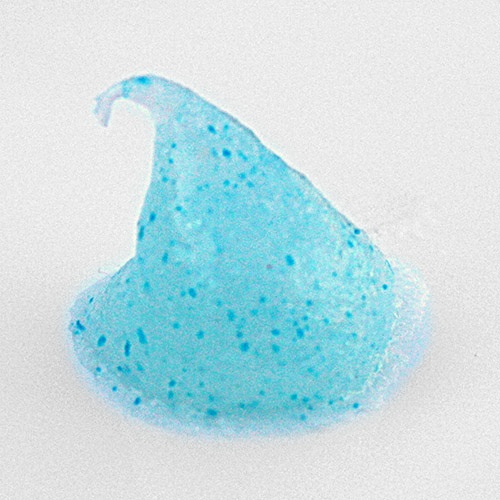According to statisticbrain.com we spent $1.8 billion dollars a year on toothpaste. Thirty years ago, Colgate had two brands of toothpaste. Today, it has 46, including 9 varieties for kids. Based on what we spend per year on toothpaste, it’s no wonder there are so many brands to choose from. With so much variety to choose from just how safe are they?
Fluoride warnings
Since 2012, the Food & Drug Administration requires that all fluoride toothpastes sold in the United States bear the following poison warning: “WARNING: Keep out of reach of children under 6 years of age. If you accidentally swallow more than used for brushing, seek professional help or contact a poison control center immediately.”
So why is the warning necessary? Because even small doses of fluoride can induce symptoms of acute fluoride toxicity. Adults may think that is unlikely that a child would eat toothpaste, but toothpastes that are marketed to children with bubble gum and fruit flavors can be more tempting than traditional toothpaste. Today, there are over 20,000 reports a year of fluoride poisoning–– a 20-fold increase since the FDA added the warning.
Fluoride in toothpaste
According to the CDC it is used to prevent tooth decay. An article in medical daily.com states that over 95% of all toothpaste in the U.S. contains fluoride. Researchers from the U.S. Environmental Protection Agency’s National Health and Environmental Effects Research Laboratory have classified fluoride as a “chemical having substantial evidence of developmental neurotoxicity.”
In a report from The American Chemical Society, scientists state that the protective shield that fluoride forms on the teeth is only 6 nanometers thick. That means it would take 10,000 layers to be the width of a human hair, scientists question whether a film that thin would actually protect the enamel.
Common ingredients found in toothpaste
Let’s clarify that not every toothpaste company is transparent with the ingredients on their website. Colgate’s website was easy to maneuver. They were transparent with ingredients and you don’t have to search endlessly to find the ingredients. Before you get too excited, it doesn’t mean that the ingredients are safe, it just means they are forthcoming about it.
If you go to the Colgate website you can click on the toothpaste you’d like and look at the list of ingredients. That’s where it gets scary. You’ll see words like polyethylene, propylene glycol, sodium saccharin, triclosan and sodium lauryl sulfate….but do you know what these chemicals are or how they can impact your health?
Polyethylene–Polyethylene is the most commonly used plastic in the world. Used in everything from garbage containers, grocery bags, plastic bottles and containers to bulletproof vests and knee replacements. So why is it used? According to Crest, it is used for cosmetic purposes to add color.
Propylene Glycol- Although this ingredient is used in anti-freeze for your car radiator, you can also find it in moisturizers, hand sanitizers, baby products, conditioners, shampoos and toothpaste. MSDS sheets warn users to avoid skin contact, yet it remains in many cosmetics. It is linked to liver abnormalities and kidney damage. In toothpaste it is used as a wetting agent and surfactant.
Sodium fluoride-Is a byproduct of the aluminum industry. It is also used in pesticides and rat poisons. According to the latest national survey by the Centers for Disease Control, 41% of American adolescents now have some form of fluorosis — an increase of over 400% from the rates found 60 years ago. The website fluoridealert.org adds “Before the widespread use of fluoride in dentistry, dental fluorosis was rarely found in western countries. Today, with virtually every toothpaste now containing fluoride, and most U.S. water supplies containing fluoride chemicals, dental fluorosis rates have reached unprecedented levels.”
Sodium Lauryl Sulfate- SLS is a detergent and a surfactant used to break down surface tension allowing the toothpaste to become a more effective cleanser. According to the American College of Toxicology, sodium laurel sulfate may stay within the body for up to five days, accumulating in the heart, liver, lungs and brain. A study in the U.S. National Library of Medicine found that a significantly higher frequency of canker sores in patients who brushed with an SLS-containing toothpaste. SLS is also linked to Nitrosamines a potent carcinogen that causes your body to absorb nitrates, another known carcinogen. Over 40,000 studies in the PubMed science library include information on this chemical.
Triclosan-Is a pesticide registered with the EPA in 1969. It should not be in toothpaste. This chemical is commonly found in numerous anti-bacterial products. Scientists also classify this as a chlorophenol, which is a chemical that is suspected of causing cancer in humans.
Red 30 Dye- Is a synthetic dye produced from petroleum or coal tar sources, approved by the FDA for drugs and cosmetics. The Environmental Working Group (EWG) rates this dye as moderate health hazard.
Blue 1 Lake Dye-The FDA approved Blue #1 for general use in food and ingested drugs in 1969. Blue 1 can induce an allergic response in individuals with pre-existing moderate asthma. The dye can cause hypersensitivity reactions. Blue 1 has been banned in Austria, Belgium, Denmark, France, Germany, Italy, Spain, Sweden and Switzerland. It has been certified as food safe in the EU and is legal in most countries.
Sodium Saccharin- Saccharin is a widely used non –nutritive sweetener in many products, such as table top sweeteners, beverages, mouthwash and toothpaste. Saccharin was discovered by Constantin Fahlberg, who was researching coal tar derivatives, when he discovered saccharin. Saccharin is found in “Sweet ‘n Low”, and other processed foods. Saccharin is in a class of compounds known as sulfonamides, which can cause allergic reactions in some individuals. Reactions can include breathing difficulties, diarrhea, and skin eruptions.
Titanium dioxide-Is an inorganic compound used as a colorant. It gives non-gel toothpastes their bright whiteness. Titanium dioxide has been described as a possible human carcinogen by the Canadian Center for Occupational Health and Safety.
PEG-8 and PEG-12-The term “PEG” (polyethylene glycol) is used for synthetic polymers of ethylene oxide — in toothpaste they are used as a humectants and solvents. Humectants prevent water loss and act as stabilizers. According to Environmental Working Group or EWG, these polymers can be contaminated with potentially toxic manufacturing impurities such as 1,4-dioxane.
What Can You Do?
Make Your Own Toothpaste, Toothpowder or Tooth Soap. There are numerous recipes online.
Avoid toothpastes that contain: Fluoride, Sodium Fluoride and Triclosan
Look for Safer Brands such as Uncle Harry’s Toothpaste or Redmond’s Earth Paste.

How to Make Your Own Toothpaste
You can adjust the size of each recipe to fit your needs. I always recommend making a small batch the first time to see if you like it or need to make some adjustments.
Don’t double dip your toothbrush into the toothpaste or toothpowder. Either dip your wet toothbrush into powder or paste, or spoon it on your toothbrush.
Recipe 1- Cinnamon Toothpaste
3 Tbsp. bentonite clay
3 Tbsp. virgin, unrefined, coconut oil
1/2 tsp sea salt
1 Tbsp. hot water
8-10 drops of Thieves essential oil
Mix all the ingredients together. They should look just like the consistency of toothpaste. Store in a reseal able bag or reseal able container.
Recipe 2 –Peppermint Toothpaste
2 tablespoons Coconut Oil
2 tablespoons Baking Soda
10 drops of Peppermint oil (optional)
Instructions:
Mix baking soda and coconut oil in a small container, until it forms a paste like consistency. Add several drops of peppermint oil and mix (*peppermint is optional)
Recipe 3-Orange Toothpaste
½ C. Coconut Oil
2-3 Tbsp. Baking Soda
1 Tbsp. Xylitol (powder in grinder to create a fine texture)
10 drops of orange essential oil
Melt coconut oil on low heat, stir in baking soda. Add xylitol and essential oils. Once solidified, give it another stir and put in container.
Recipe 4-Peppermint Toothpowder
2 Tbsp. Baking Soda
2 tbsp. Bentonite Clay
1/2 tbsp. Sea Salt
10-20 drops Peppermint Oil (or to taste)
Mix all ingredients together in a non-metal bowl, or place in a small glass jar and shake until combined. To Use: Simply dip your toothbrush into the powder and start brushing.








